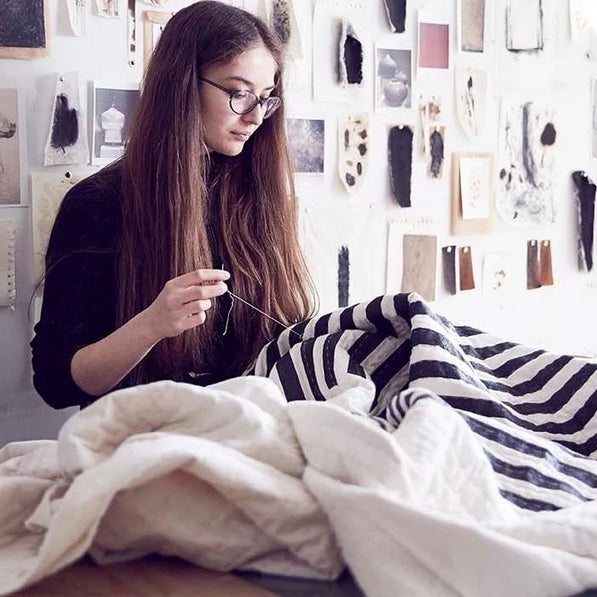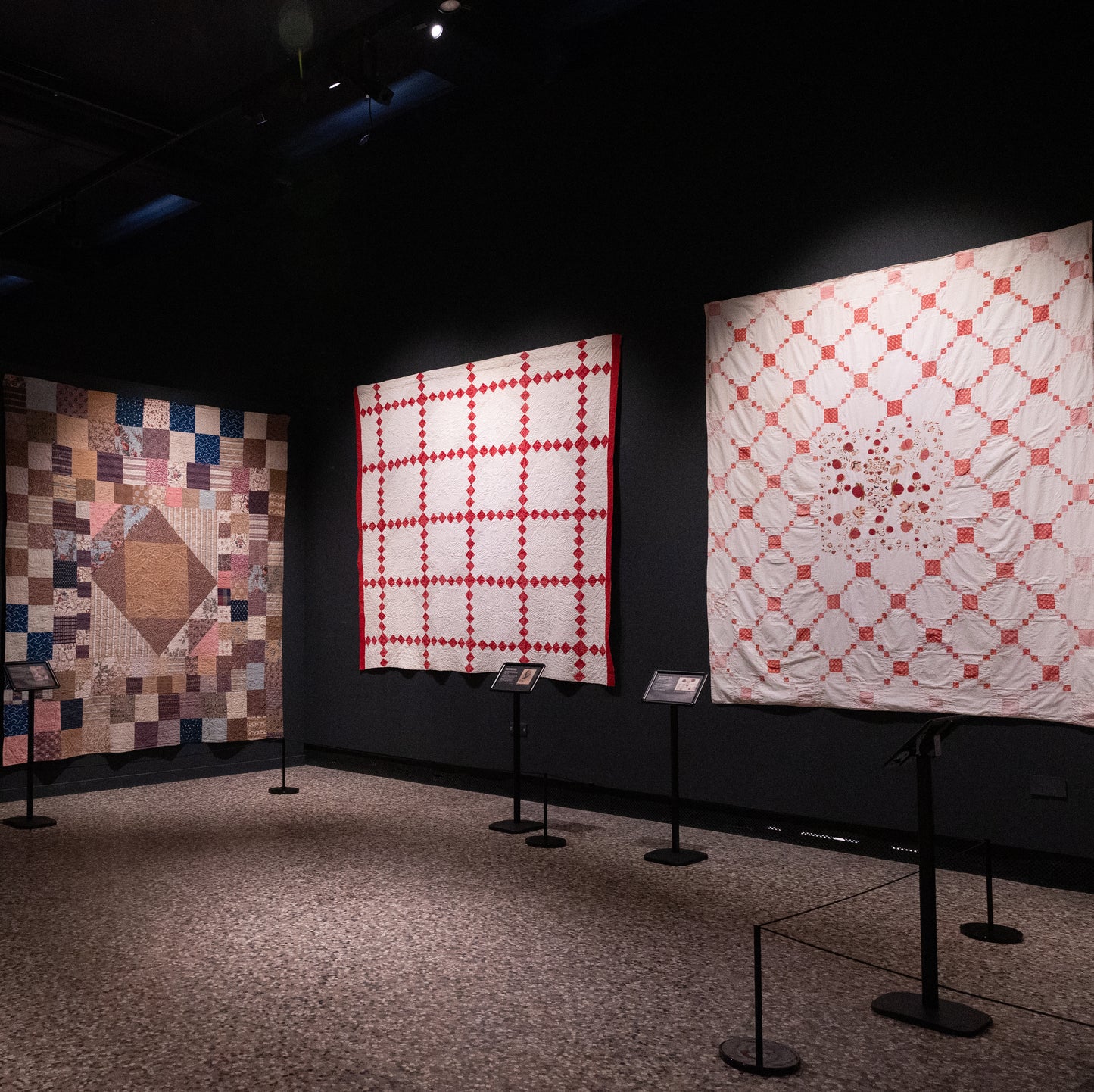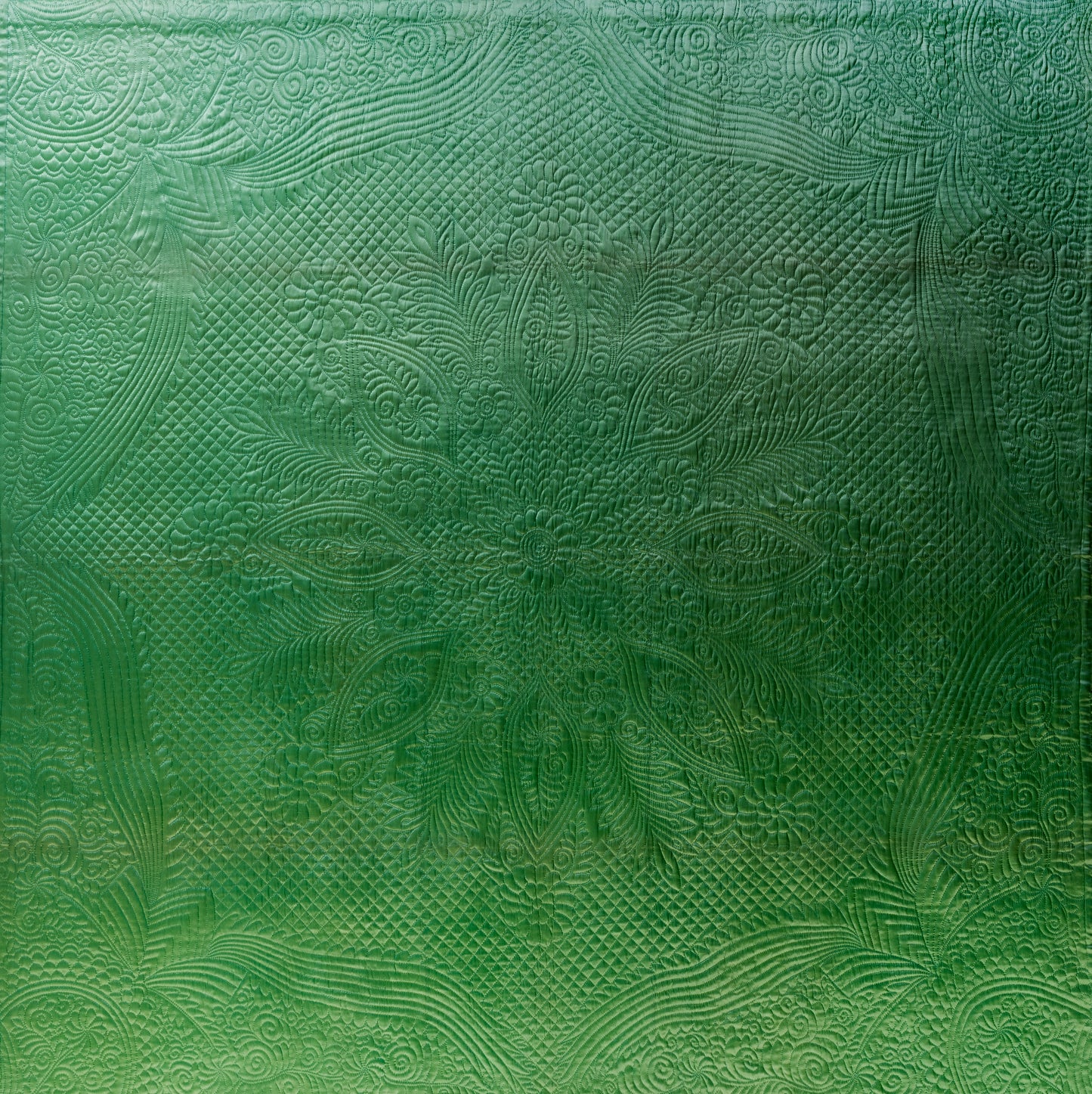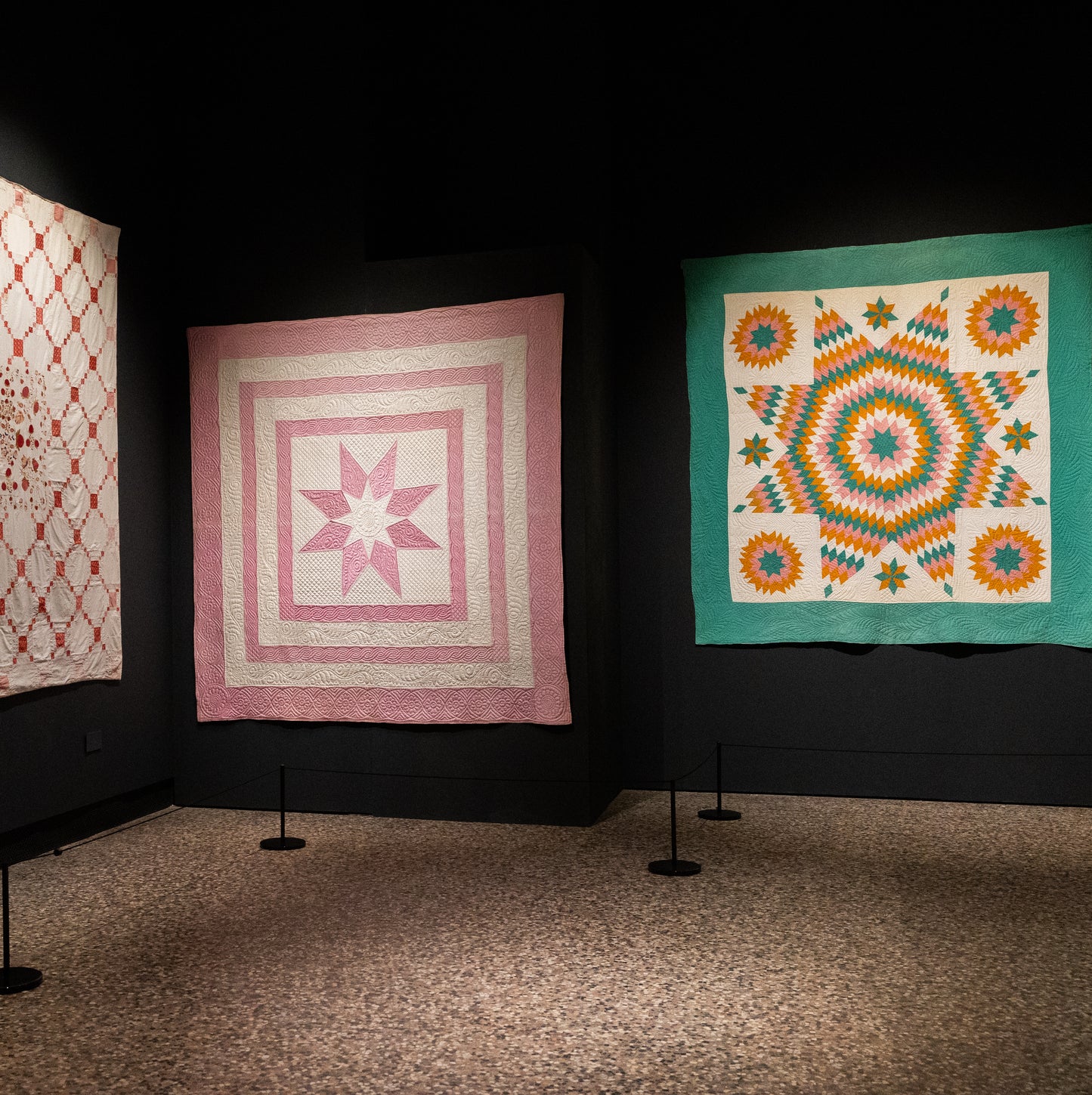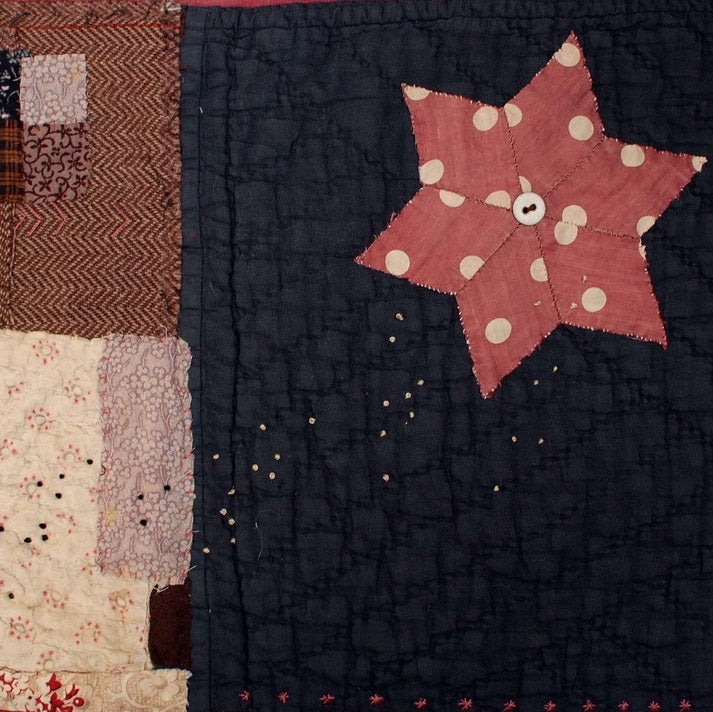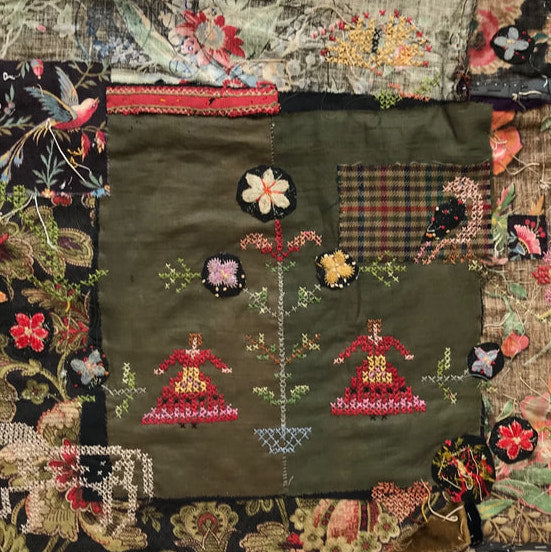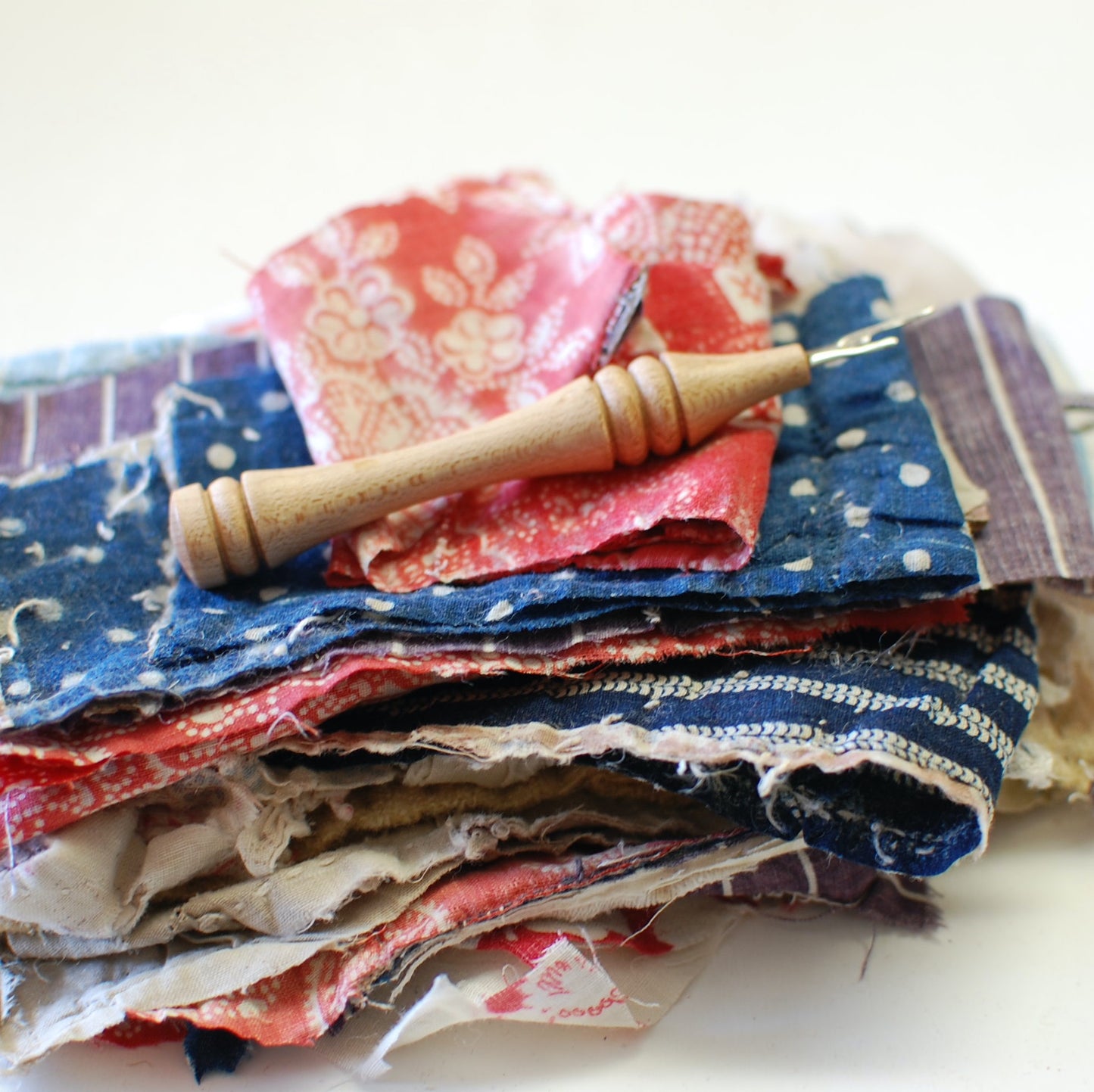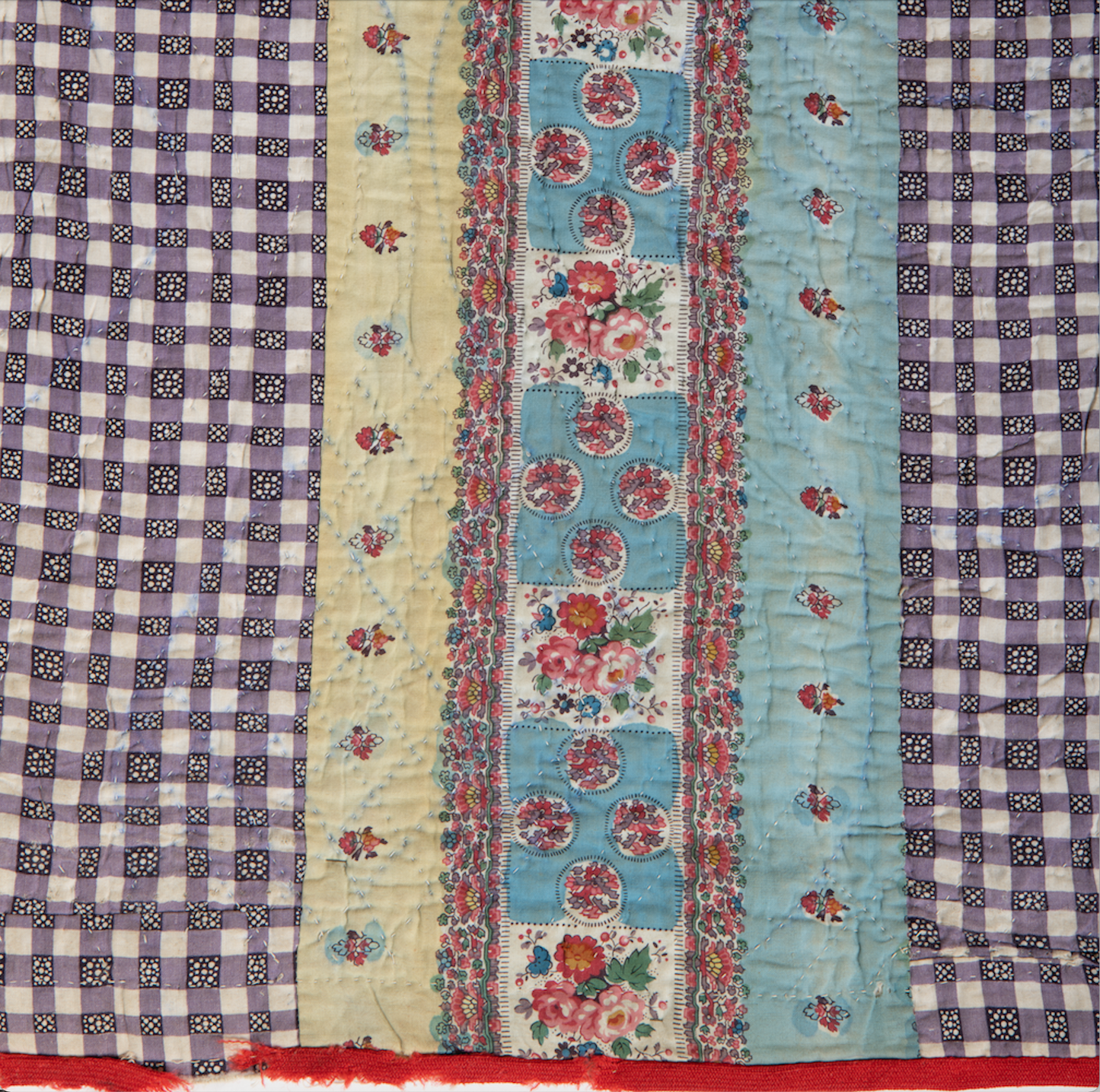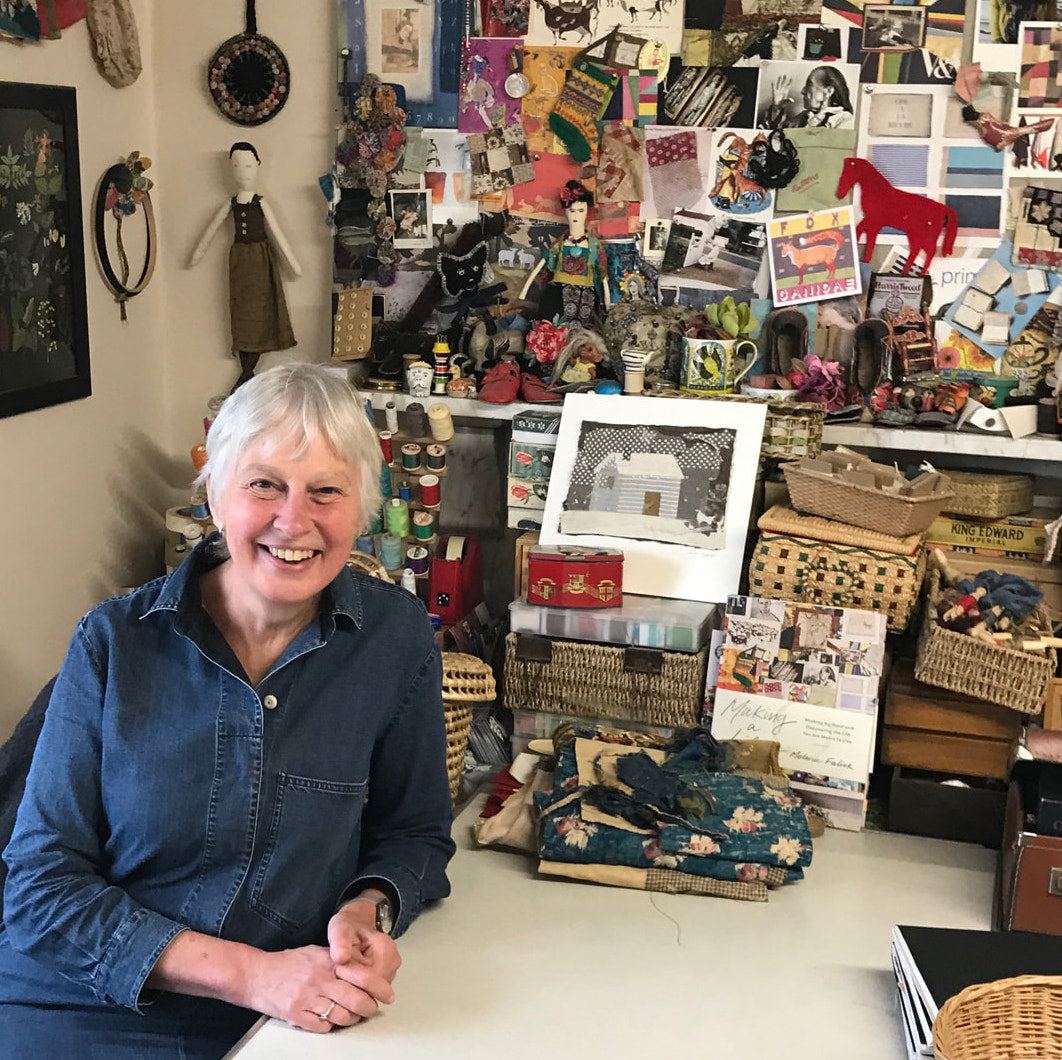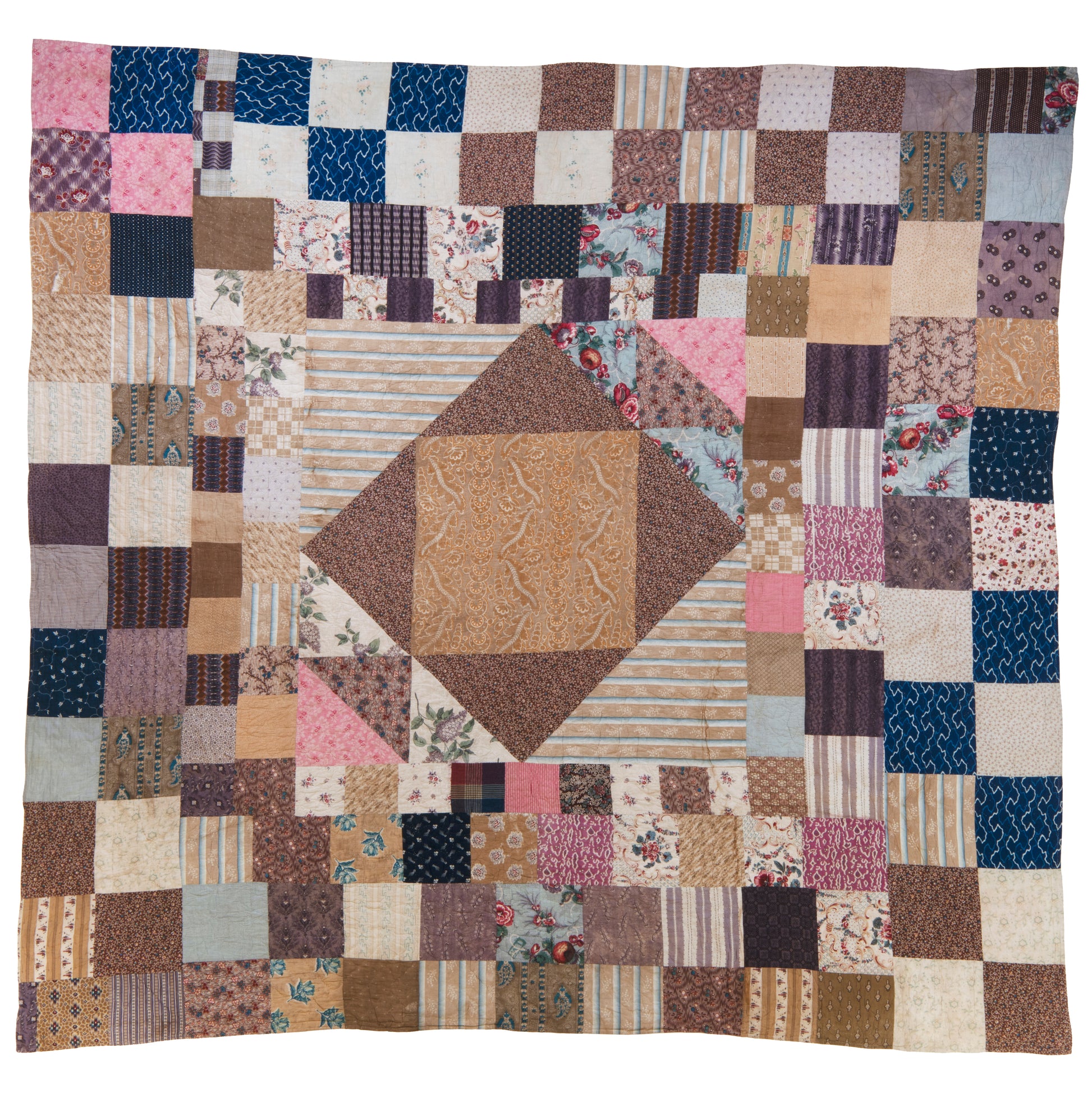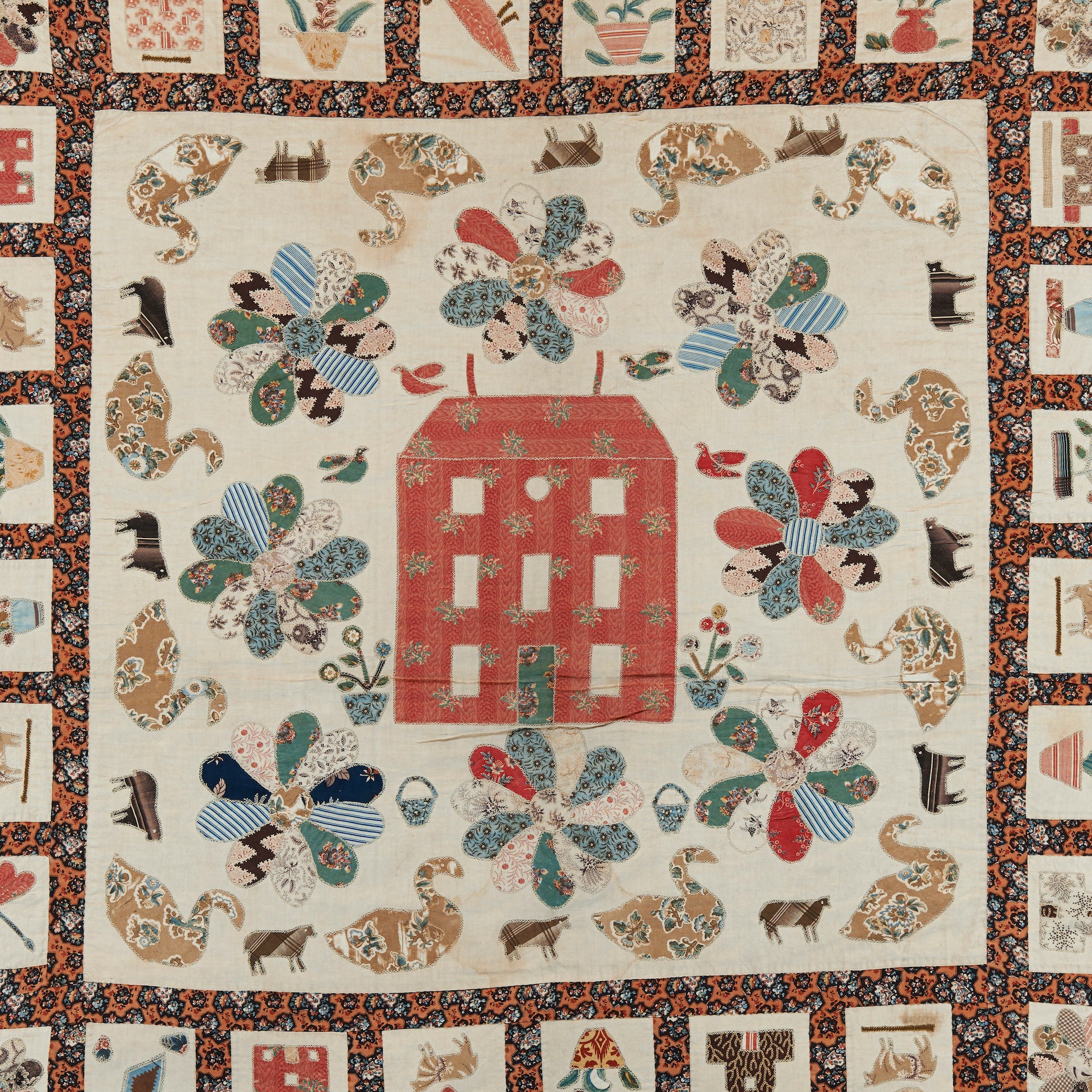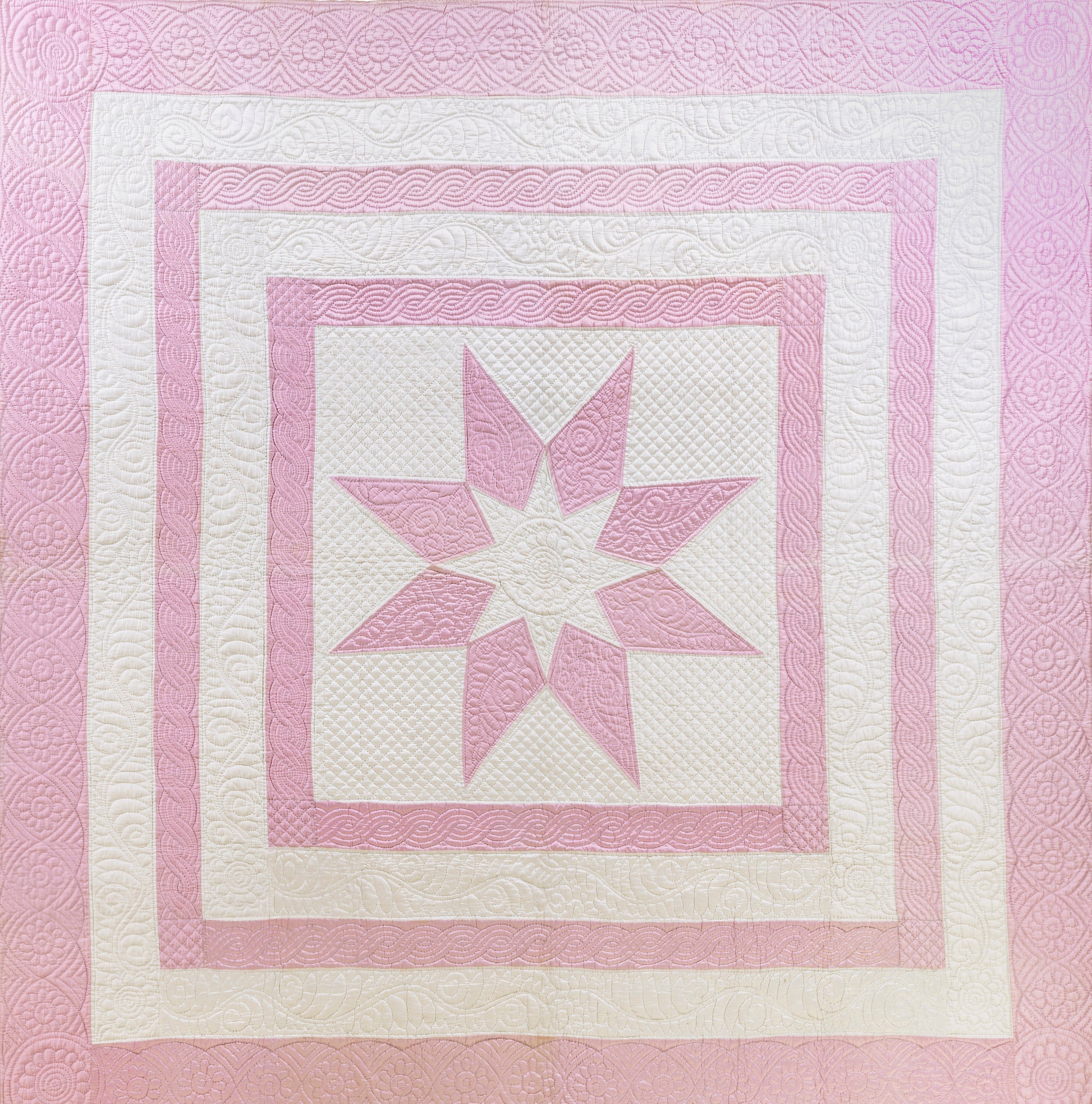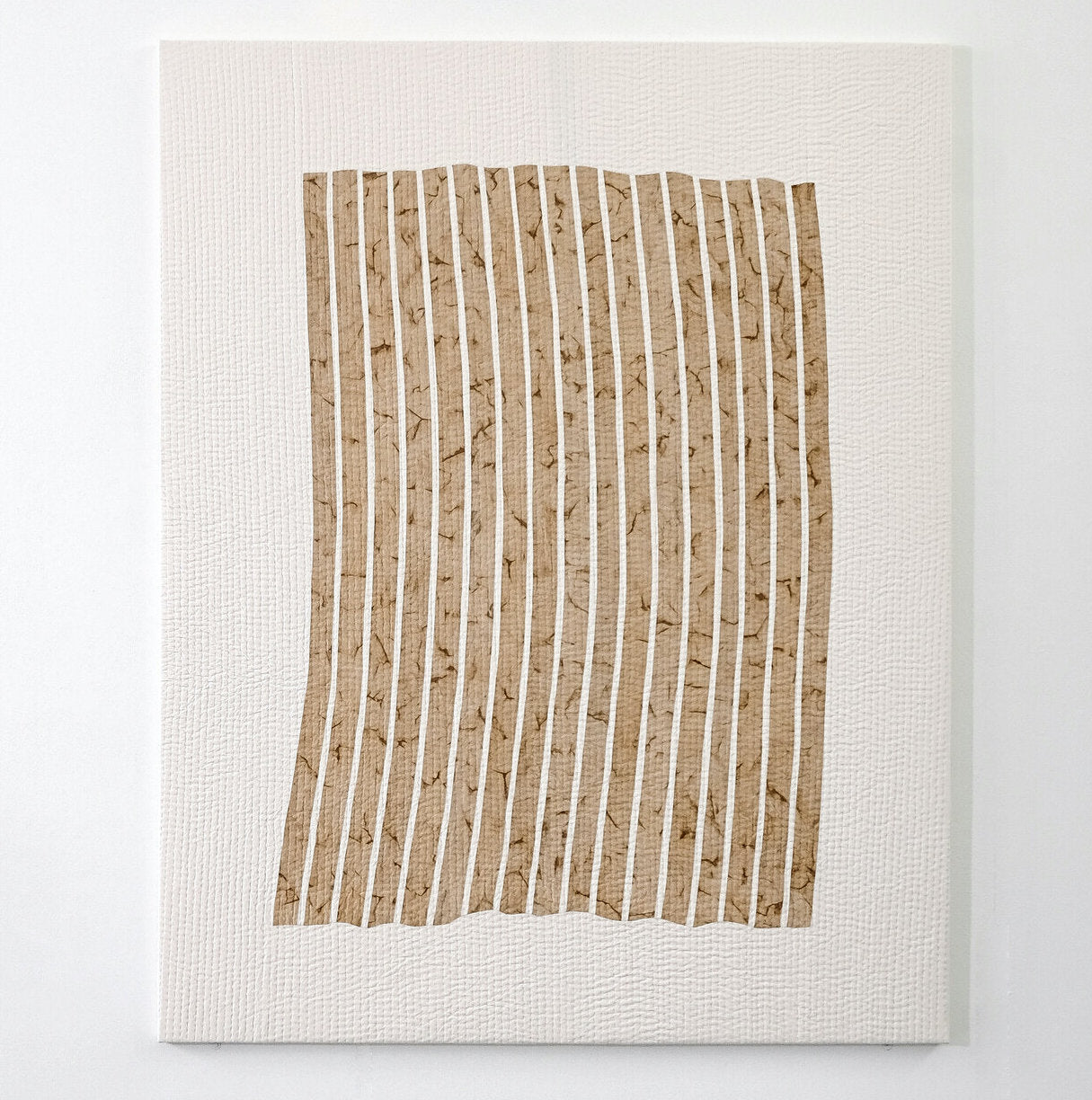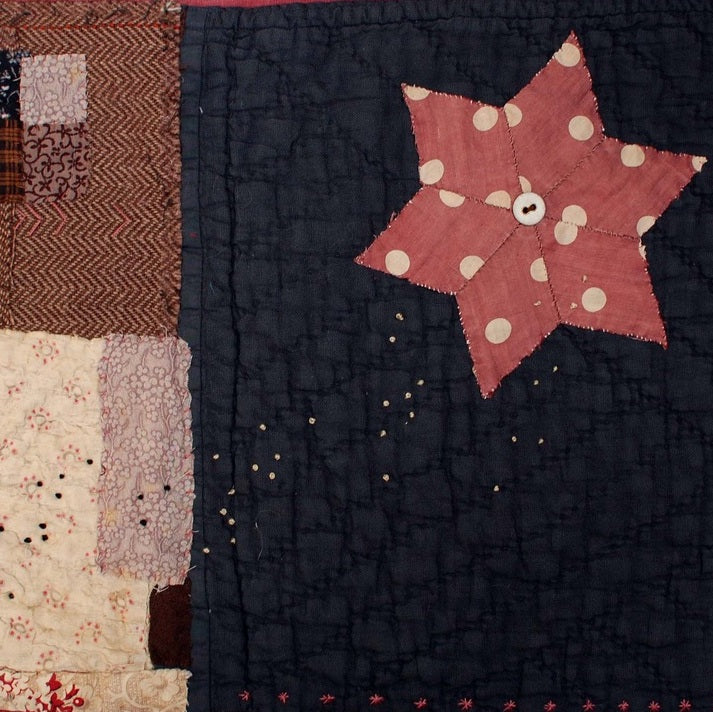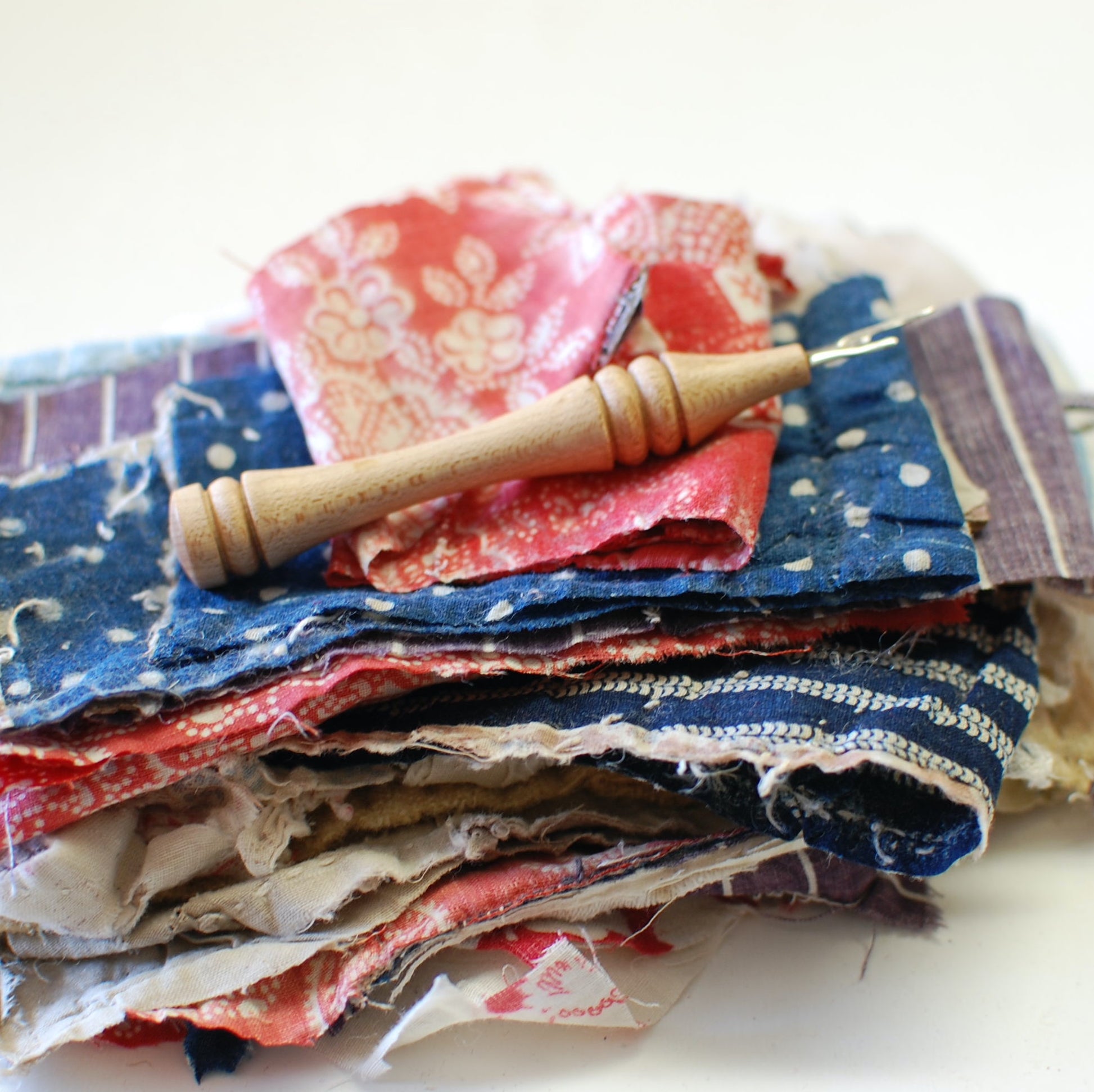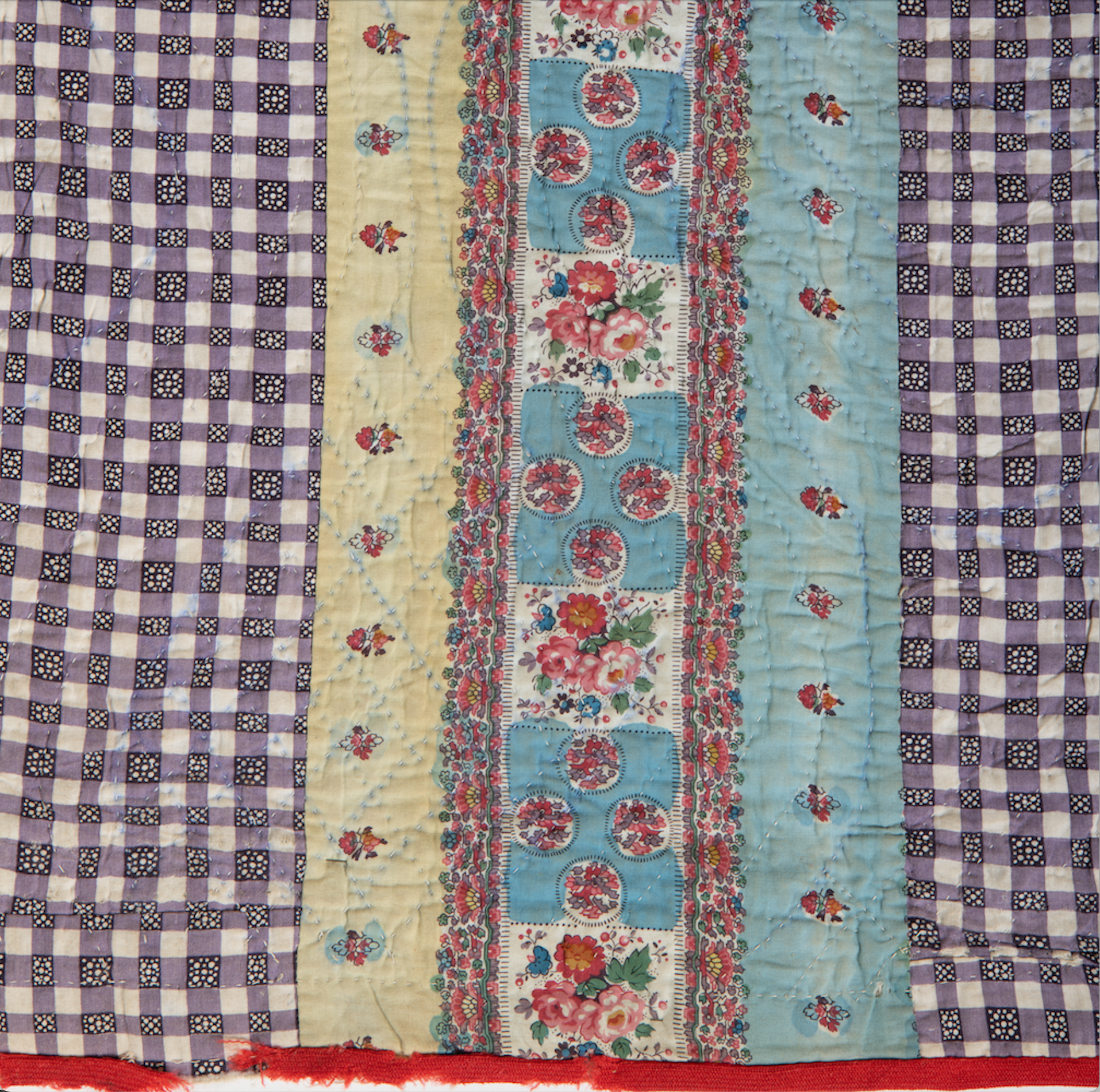Quilting with Mandy Pattullo, Dorothy Osler, Joanna Hashagen, Abigail Booth and The Quilters' Guild
Selvedge Foundation
Couldn't load pickup availability

Presentations by Mandy Pattullo, Abigail Booth, The Quilters' Guild and Dorothy Osler, Joanna Hashagen of The Bowes Museum on the theme of quilting.
Mandy Pattullo
Mandy Pattullo is an artist based in Northumberland in the North of England.
She makes garments, textile collages and fabric books which often incorporate
antique textiles. For many years this has included fragments of old patchwork
and quilts. Mandy sometimes works directly on to the surface of the quilt
with embroidery and appliqué or she unpicks old quilts to find the layers
hidden inside. These form a palette of materials which evidence the ghost
stitches of previous makers. Mandy’s pieces bring together precious fragments
to form evocative compositions. The viewer is forced to re-examine fabrics
that have become flawed through wear and tear, to find in them a new beauty.
Description of talk:
Many Pattullo will share with us how she uses quilting as a base for her textile work and what the quilting methods bring to her collaged textiles.
Dorothy Osler
After a career in museums and academic publishing, Dorothy Osler continues to work as an author, independent scholar, curator and textiles consultant. She is internationally recognised as a leading authority on the vernacular quiltmaking traditions of Great Britain and has published widely in this field over the past 35 years including seven books published by international publishers and numerous scholarly papers and articles. She curated The Bowes Museum’s major exhibition North Country Quilts: Legend and Living Tradition in 2000 and authored the accompanying book of the same name (reprinted 2021). Currently, she co-curated The Bowes Museum’s current (2021) exhibition North Country Quilts: In Celebration of New Acquisitions and has written the exhibition catalogue. Dorothy Osler was also external consultant to the V&A for their major quilts exhibition in 2010 and contributed to the accompanying book Quilts 1700‒2010: Hidden Histories, Untold Stories. She is an Associate Fellow of the International Quilt Museum, University of Nebraska-Lincoln, and an Honorary Member of The Quilters’ Guild of the British Isles.
Description of talk:
The Story of the ‘Quilt Stampers’ of Northern England: A Unique Quilting Trade
In the village of Allenheads, a lead mining centre in the North Pennine Dales, a unique trade known as ‘quilt stamping’ arose in the 1880s whereby skilled practitioners and their apprentices drew out quilting designs onto prepared fabrics. The marked tops were then posted to customers to add filling and backing ‒ and stitch. The resulting bed covers are amongst the most dramatic and remarkable quilts that survive from the late nineteenth and early twentieth centuries and several examples are currently on display in The Bowes Museum’s current exhibition: North Country Quilts: In Celebration of New Acquisitions. In her talk, Dorothy Osler will discuss the key protagonists of this story and will evaluate the
role that quilt ‘stampers’ (designers) played in their mining communities. She will also critically examine their position within the cultural and art history of northern England.
Joanna Hashagen
Joanna Hashagen is curator of Fashion and Textiles at The Bowes Museum, Barnard Castle, with its significant and wide-ranging textile collections. Prior to this she was Assistant Keeper, Gallery of Costume, Manchester, following a BA in history of art and a postgraduate diploma in museum and art gallery studies. She has curated many temporary textile exhibitions with accompanying catalogues. The acquisition of a large world-class lace collection led to a book and exhibition - Fine & Fashionable: Lace from the Blackborne Collection (2006) with Santina Levey. From 2007-10, she led the project to create a new Fashion and Textile Gallery, which received a Museums Heritage Award, ‘Highly Commended’ for best permanent exhibition, 2011. She has delivered a fashion exhibition programme in the new gallery, including Vivienne Westwood Shoes (2011) and Henry Poole & Co, Founder of Savile Row – The Art of Bespoke Tailoring and Wool Cloth (2013). She co-curated Style Is Eternal: Yves Saint Laurent (2015), with Fondation Pierre Bergé - Yves Saint Laurent, Paris. The current Quilt exhibition, co-curated with Dorothy Osler, is in celebration of new acquisitions she has made since 2000.
Description of talk:
An introduction and overview by the co-curator of the exhibition North Country Quilts: In Celebration of New Acquisitions by The Bowes Museum
Why and how did this exhibition come about? What was the thinking behind the original proposal and did that change due to Covid lock down?
How have the quilts been acquired by the museum and what is the
acquisition policy? How was the show curated? What are the themes? Why is recording provenance so important?
All this will be explained in this introduction to the exhibition and some of the stories behind the exhibits will be told. For the first time The Bowes have acquired quilts by contemporary makers which will be featured in her talk.
Abigail Booth
Abigail Booth (b.1991, London) studied Fine Art at Byam Shaw School of Art, the San Francisco Art Institute and Chelsea College of Art, where she graduated in 2013 as a painter and sculptor. Working across textiles, drawing and painting, her work explores the histories of piecework, pigment and cloth. Referencing a quiet simplicity in the gesture and movement of the hand, her work seeks a connection to the psychology of landscape through the reflective nature of organic colour and embodied interactions with the natural. The time-based nature of her work produces large-scale images that explore the liminal space of the constructed canvas, while challenging the relationship between the imagined and the actual through her use of a material language of painting and textile combined. She exhibits her work throughout the UK and internationally, often collaborating with her partner Max Bainbridge under their studio Forest + Found.
Description of talk:
Abigail Booth will discuss the evolution of her quilted paintings through several key works from her career. Giving insight into her material research into natural colour, pigments and textile, she will describe how her quilted works delve into the internal narratives of our imagination, dreams and memory, as they originate in our interactions with nature.
Dr Bridget Long of the The Quilters' Guild
The Quilters’ Guild of the British Isles is a membership organisation and an educational charity. Founded in 1979, The Quilters’ Guild is open to everyone and run by its members. It aims to promote quilt-making in all its forms across the United Kingdom and to ensure a vibrant future for the craft. The Guild works to preserve the heritage of British quilt-making and since its formation has built a unique collection of antique and contemporary items. The Quilters’ Guild Museum Collection has grown due to both donations and purchases and now numbers over nine hundred items. It is fully Accredited under the Arts Council of England's Accreditation Scheme and meets all its standards of conservation, care and documentation.
Bridget Long is a textile historian. A past President and Honorary Member of The Quilters’ Guild, she is now an advisor to the Guild’s Museum Collection. She is a Visiting Research Fellow in History at the University of Hertfordshire and an Associate Fellow at the International Quilt Museum, University of Nebraska-Lincoln. Bridget has published papers on early British quilt-making and has curated exhibitions in Britain and the USA. Her most recent exhibition was ‘Quilts of Emotion,’ from 4 December 2020 to 27 March 2021 at the International Quilt Museum.
Description of the talk:
The talk will begin with a description of The Quilters’ Guild and its work in promoting British quilt-making by uncovering its history, encouraging learning and contemporary practice as well as ensuring the survival of the related crafts of patchwork, quilting and appliqué for the future. The development of the Guild’s Museum Collection will be tracked from a small group of antique objects gathered for members’ study in the early 1980s to a collection of over nine hundred British quilts, coverlets, garments, and small domestic items ranging from the earliest known dated British patchwork – the 1718 Silk Patchwork Coverlet – to recent pieces by contemporary quilt artists.
Cancellation policy
All pre-recorded talks are non-refundable.
Share
